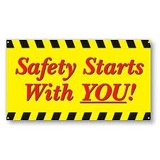Information
-
Document No.
-
Audit Title
-
Client / Site
-
Conducted on
-
Prepared by
-
Location
-
Personnel
General Requirements
-
Determine if the employer has established a program consisting of energy-control procedures, employee training, and periodic inspections. The program must set in place requirements to ensure that, before any employee performs any servicing or maintenance on a machine or equipment where unexpected energizing, startup, or release of stored energy could occur and cause injury, the machine or equipment is isolated from the energy source and rendered inoperative (29 CFR 1910.147(c)(1)).
Verify that the following practices are included in the program (29 CFR 1910.147(c)(2)):
If an energy-isolating device is capable of being locked out, the employer's energy control program must utilize lockout, unless the employer can demonstrate that utilization of a tagout system will provide full employee protection.
If an energy-isolating device is not capable of being locked out, the employer's energy control program must utilize a tagout system.
Whenever major replacement or major repair, renovation, or modification of a machine or equipment is performed, and whenever new machines or equipment are installed, energy-isolating devices for such machines or equipment must be designed to accept a lockout device.
NOTE: This requirement only applies to equipment and machines manufactured after January 2, 1990; however, when alterations to older machines are made, they must be designed to accept a lockout device. -
1.1 A program consisting of energy-control procedures, employee training, and periodic inspections must be established. 29 CFR 1910.147(c)(1) - (c)(2)<br>
-
Finding Description:
-
Corrective Action:
-
Take a photo, or upload one from your device. Once you are done, tap on the image, tap "View", and tap "Annotate" to start editing.
-
Verify that the procedures clearly and specifically outline the scope, purpose, authorization, rules, and techniques to be used to control hazardous energy and the means to enforce compliance including, but not limited to, the following (29 CFR 1910.147(c)(4)(ii)):
a specific statement of the intended use;
the specific procedural steps to shut down, isolate, block, and secure machines or equipment to control hazardous energy;
specific procedural steps for the placement, removal, and transfer of lockout or tagout devices, and the responsibility for taking these actions; and
specific requirements for testing a machine or equipment to determine and verify the effectiveness of lockout devices, tagout devices, and other energy control measures.
If a procedure is unavailable for a particular piece of equipment or machine, determine that the following elements exist (29 CFR 1910.147(c)(4)(i)):
the equipment or machine has no potential for stored or residual energy or re-accumulation of stored energy after shut down;
the equipment or machine has a single energy source which can be readily identified and isolated;
the isolation and locking out of that energy source will completely de-energize and de-activate the equipment or machine;
the equipment or machine is isolated from that energy source and locked out during maintenance or servicing;
a single lockout device will achieve a locked-out condition;
the lockout device is under the exclusive control of the authorized employee performing the servicing or maintenance;
the maintenance and servicing does not create hazards for other employees; and
the employer has had no accidents involving unexpected activation or re-energization of the equipment or machine during maintenance or servicing. -
1.2 Procedures must be developed, documented, and used to control potentially hazardous energy when employees are engaged in the activities covered by the lockout/tagout standard.<br>29 CFR 1910.147(c)(4)
-
Finding Description:
-
Corrective Action:
-
Take a photo, or upload one from your device. Once you are done, tap on the image, tap "View", and tap "Annotate" to start editing.
-
Verify that a tagout device is attached in the same location as a lockout device would have been (29 CFR 1910.147(c)(3)(i)).
Verify that this requirement is included in the employer's standard operating procedures (GMP). -
1.3 When a tagout device is used on an energy-isolating device that is not capable of being locked out, the tagout device must be attached at the same location the lockout device would have been attached.<br>29 CFR 1910.147(c)(3)(i)
-
Finding Description:
-
Corrective Action:
-
Take a photo, or upload one from your device. Once you are done, tap on the image, tap "View", and tap "Annotate" to start editing.
-
Verify that the employer meets the following requirements:
locks, tags, chains, wedges, key blocks, adapter pins, self-locking fasteners, or other hardware are provided by the employer for isolating, securing, or blocking of machines or equipment from energy sources (29 CFR 1910.147(c)(5)(i)); and
lockout devices and tagout devices are singularly identified as the only devices(s) used to control energy and are not used for any other purpose (29 CFR 1910.147(c)(5)(ii)). -
1.4 The level of safety achieved in the tagout program must be equivalent to the level of safety obtained by using a lockout program.<br>29 CFR 1910.147(c)(3)(ii)
-
Finding Description:
-
Corrective Action:
-
Take a photo, or upload one from your device. Once you are done, tap on the image, tap "View", and tap "Annotate" to start editing.
-
Determine if the employer has demonstrated that the level of safety achieved in the tagout program is equivalent to the level of safety obtained by using a lockout program (29 CFR 1910.147(c)(3)(i) - (c)(3)(ii)).
Determine if the employer has implemented additional means, if necessary, to ensure full employee protection by reducing the likelihood of an inadvertent energization, including the following where applicable (29 CFR 1910.147(c)(3)(ii)):
removing an isolating circuit element;
blocking a controlling switch;
opening an extra disconnecting device; or
removing a valve handle. -
1.5 Protective materials and hardware must be provided.<br>29 CFR 1910.147(c)(5)(i) - (c)(5)(ii)
-
Finding Description:
-
Corrective Action:
-
Take a photo, or upload one from your device. Once you are done, tap on the image, tap "View", and tap "Annotate" to start editing.
-
Verify that the devices used in the lockout/tagout program are appropriately designed and constructed, and are provided where and when needed (29 CFR 1910.147(c)(5)(ii).
Verify that lockout and tagout devices are capable of withstanding the environment to which they are exposed for the maximum period of time that exposure is expected (29 CFR 1910.147(c)(5)(ii)((A)(1)).
Verify that tagout devices are constructed and printed so that exposure to weather conditions or wet and damp locations will not cause the tag to deteriorate or the message on the tag to become illegible (29 CFR 1910.147(c)(5)(ii)(A)(2)).
Verify that tags will not deteriorate when used in corrosive environments such as areas where acid and alkali chemicals are handled and stored (29 CFR 1910.147(c)(5)(ii)(A)(3)).
Verify that lockout and tagout devices are standardized within the facility in at least one of the following criteria: color; shape; or size; and, in the case of tagout devices, print and format (29 CFR 1910.147(c)(5)(ii)(B)).
Verify that lockout devices are substantial enough to prevent removal except by use of excessive force or unusual techniques, such as by bolt cutters or other metal-cutting tools (29 CFR 1910.147(c)(5)(ii)(C)(1)).
Verify that tagout devices, including their means of attachment, are substantial enough to prevent inadvertent or accidental removal (29 CFR 1910.147(c)(5)(ii)(C)(2)).
Verify that tagout device attachment means are non-reusable, attachable by hand, self-locking, and non-releasable with a minimum unlocking strength of no less than 50 lb and having the general design and basic characteristics of being at least equivalent to a one-piece, all-environment-tolerant nylon cable tie (29 CFR 1910.147(c)(5)(ii)(C)(2)).
Verify that lockout devices and tagout devices indicate the identity of the employee applying the device(s) (29 CFR 1910.147(c)(5)(ii)(D)).
Verify that tagout devices warn against hazardous conditions if the machine or equipment is energized and include a legend such as the following: ''Do Not Start,'' ''Do Not Open,'' ''Do Not Close,'' ''Do Not Energize,'' ''Do Not Operate'' (29 CFR 1910.147(c)(5)(iii)). -
1.6 Lockout/tagout devices must be durable and meet certain requirements.<br>29 CFR 1910.147(c)(5)(ii) - (c)(5)(iii)
-
Finding Description:
-
Corrective Action:
-
Take a photo, or upload one from your device. Once you are done, tap on the image, tap "View", and tap "Annotate" to start editing.
-
NOTE: OSHA provides detailed guidance on how to set up a periodic inspection program, including when and how energy control procedures can be grouped for the purpose of inspection, inspection of energy control procedures that are performed less frequently than every 12 months, and the methods that can be used to accomplish periodic inspections. When evaluating this paragraph, refer to CPL 02-00-147 Chapter XVII.
Verify that periodic inspections are being conducted at least annually as follows (29 CFR 1910.147(c)(6)(i)):
Periodic inspections must be performed by an authorized employee other than the one(s) utilizing the energy control procedure being inspected.
Periodic inspections must be conducted to correct any deviations or inadequacies identified.
Where lockout is used for energy control, periodic inspections must include a review between the inspector and each authorized employee of that employee's responsibilities under the energy control procedure being inspected as well as the training elements in paragraph 1.8.
Where tagout is used for energy control, periodic inspections must include a review between the inspector and each authorized and affected employee of that employee's responsibilities under the energy control procedure being inspected and of the limitations of tags.
Verify that the employer certifies that periodic inspections have been performed and that certification includes the following (29 CFR 1910.147(c)(6)(ii)):
the equipment or machines on which the energy control procedure was being utilized;
the date of the inspection;
the employees included in the inspection; and the person performing the inspection. -
1.7 Periodic inspections must be conducted at least annually to ensure that requirements are being followed.<br>29 CFR 1910.147(c)(6)(i) - (c)(6)(ii)
-
Finding Description:
-
Corrective Action:
-
Take a photo, or upload one from your device. Once you are done, tap on the image, tap "View", and tap "Annotate" to start editing.
-
Show that employee training has been accomplished and is kept up to date; and
contain each employee's name and dates of training.
Determine whether each affected employee has been instructed in the purpose and use of the energy-control procedure (29 CFR 1910.147(c)(7)(i)).
Determine whether all other employees whose work operations are or may be in an area where energy-control procedures may be utilized, are instructed about the procedure and about the prohibition relating to attempts to restart or re-energize machines or equipment that are locked out or tagged out (29 CFR 1910.147(c)(7)(i)).
When tagout systems are used, determine whether employees are also trained in the following limitations of tags (29 CFR 1910.147(c)(7)(ii)):
Tags are essentially warning devices attached to energy-isolating devices, and do not provide the physical restraint on those devices that is provided by a lock.
When a tag is attached to an energy-isolating means, it is not removed without authorization of the authorized person responsible for it, and it is never bypassed, ignored, or otherwise defeated.
In order to be effective, tags must be legible and understandable by all authorized employees, affected employees, and all other employees whose work operations are or may be in the area.
Tags and their means of attachment must be made of materials that will withstand the environmental conditions encountered in the workplace.
NOTE: Where tags are potentially attached with a fastener which might be inappropriate for the workplace, interview employees to determine if they know which fastener to use.
Tags and their meaning must be understood as part of the overall energy control program and should not evoke a false sense of security.
Tags must be securely attached to energy-isolating devices, so that they cannot be inadvertently or accidentally detached during use. -
1.8 Training must be provided to ensure that employees understand the purpose and functions of the energy control program and that they acquire the knowledge and skills required for the safe application, usage, and removal of energy controls.<br>29 CFR 1910.147(c)(7)(i) - (c)(7)(ii) and (c)(7)(iv)
-
Finding Description:
-
Corrective Action:
-
Take a photo, or upload one from your device. Once you are done, tap on the image, tap "View", and tap "Annotate" to start editing.
-
Verify that additional retraining is conducted as required:
whenever a periodic inspection reveals, or whenever the employer has reason to believe, that there are deviations from or inadequacies in the employee's knowledge or use of the energy-control procedures (29 CFR 1910.147(c)(7)(iii)(A) - (c)(7)(iii)(B)); and
to re-establish employee proficiency, and introduce new or revised control methods and procedures as necessary (29 CFR 1910.147(c)(7)(iii)(C)).
NOTE: OSHA expects retraining to be provided for all authorized and affected employees whenever there is a change in their job assignments, a change in machines, equipment or processes that present a new hazard, or when there is a change in the energy control procedure (CPL 02-00-147). -
1.9 All authorized and affected employees must be retrained whenever their job assignments change, whenever there is a change in equipment, machines, or processes which presents a new hazard, or whenever there is a change in the energy-control procedures.<br>29 CFR 1910.147(c)(7)(iii)
-
Finding Description:
-
Corrective Action:
-
Take a photo, or upload one from your device. Once you are done, tap on the image, tap "View", and tap "Annotate" to start editing.
-
Verify that only authorized, trained individuals perform lockout/tagout operations (29 CFR 1910.147(c)(8)).
-
1.10 Lockout or tagout procedures must be performed only by the authorized employees who are performing the servicing or maintenance.<br>29 CFR 1910.147(c)(8)
-
Finding Description:
-
Corrective Action:
-
Take a photo, or upload one from your device. Once you are done, tap on the image, tap "View", and tap "Annotate" to start editing.
-
Verify that all affected employees are to be notified regarding lockout/tagout devices and determine if notification is to be given before the controls are applied and after they are removed from the machine or equipment (see also section 2) (29 CFR 1910.147(c)(9)).
Verify that employees are notified before and after lockout/tagout devices are either placed or removed from equipment and machines (29 CFR 1910.147(c)(9)). -
1.11 Affected employees must be notified by the employer or authorized employee of the application and removal of lockout devices or tagout devices.<br>29 CFR 1910.147(c)(9)
-
Finding Description:
-
Corrective Action:
-
Take a photo, or upload one from your device. Once you are done, tap on the image, tap "View", and tap "Annotate" to start editing.
-
Verify that sequential steps are taken as follows (29 CFR 1910.147(f)(1)):
clear the equipment or machine of tools and materials;
remove employees from the machine or equipment area;
remove the lockout or tagout devices;
proceed with testing or positioning; and
de-energize all systems and reapply energy control measures to continue the servicing and maintenance. -
1.12 Procedures must be followed whenever lockout or tagout devices must be temporarily removed from the energy-isolating device, and the machine or equipment is energized to test or position the machine, equipment, or component thereof.<br>29 CFR 1910.147(f)(1)
-
Finding Description:
-
Corrective Action:
-
Take a photo, or upload one from your device. Once you are done, tap on the image, tap "View", and tap "Annotate" to start editing.
-
Verify that the onsite employer and the offsite employer informs each other of their respective lockout or tagout procedures (29 CFR 1910.147(f)(2)(i)).
Verify that the onsite employer ensures that his/her employees understand and comply with the restrictions and prohibitions of the offsite employer's energy control program (29 CFR 1910.147(f)(2)(ii)). -
1.13 When outside personnel are engaged in lockout/tagout procedures, the on-site employer and the outside employer must inform each other of their respective lockout or tagout procedures.<br>29 CFR 1910.147(f)(2)
-
Finding Description:
-
Corrective Action:
-
Take a photo, or upload one from your device. Once you are done, tap on the image, tap "View", and tap "Annotate" to start editing.
-
Verify that when servicing and/or maintenance is performed by a crew, craft, department, or other group, they utilize a procedure that affords the employees a level of protection equivalent to that provided by implementation of a personal lockout or tagout device (29 CFR 1910.147(f)(3)(i)).
Verify the lockout/tagout procedures include, but are not limited to, the following specific requirements (29 CFR 1910.147(f)(3)(ii)):
Primary responsibility is vested in an authorized employee for a set number of employees working under the protection of a group lockout or tagout device (such as an operations lock).
Provision made for the authorized employee to ascertain the exposure status of individual group members with regard to the lockout or tagout of the equipment or machine.
When more than one crew, craft, or department is involved, assignment of overall job-associated lockout or tagout control responsibility is given to an authorized employee designated to coordinate affected work forces and ensure continuity of protection.
Each authorized employee must attach a personal lockout or tagout device to the group lockout device, group lockbox, or comparable mechanism when he or she begins work, and must remove those devices when he or she stops working on the machine or equipment being serviced or maintained. -
1.14 When lockout/tagout procedures are performed by a crew, craft, department, or other group, they must utilize a procedure which affords the employees a level of protection equivalent to that provided by the implementation of a personal lockout or tagout device.<br>29 CFR 1910.147(f)(3)
-
Finding Description:
-
Corrective Action:
-
Take a photo, or upload one from your device. Once you are done, tap on the image, tap "View", and tap "Annotate" to start editing.
-
Verify that the procedures which address continuity of lockout or tagout protection include a provision for the orderly transfer of lockout or tagout device protection between off-going and oncoming employees to minimize exposure to hazards from the unexpected energization or startup of the machine or equipment, or release of stored energy (29 CFR 1910.147(f)(4)).
-
1.15 Procedures must be utilized during shift or personnel changes to ensure the continuity of lockout or tagout protection.<br>29 CFR 1910.147(f)(4)
-
Finding Description:
-
Corrective Action:
-
Take a photo, or upload one from your device. Once you are done, tap on the image, tap "View", and tap "Annotate" to start editing.
Application
2. Application and Release of Energy Controls
-
Verify that procedures to apply energy controls (the lockout or tagout procedures) cover the following elements, and that the actions and are done sequentially:
Prepare for shutdown. Before an authorized or affected employee turns off a machine or equipment, the authorized employee must have knowledge of the type and magnitude of the energy, the hazards of the energy to be controlled, and the method or means to control the energy (29 CFR 1910.147(d)(1)).
Shutdown machine or equipment. The machine or equipment must be turned off or shut down using the procedures established for that machine or equipment. An orderly shutdown must be utilized to avoid any additional or increased hazard(s) to employees as a result of the equipment stoppage (29 CFR 1910.147(d)(2)).
Isolate machine or equipment. All energy-isolating devices needed to control energy to the machine or equipment must be located and operated to isolate the machine or equipment from the energy source(s) (29 CFR 1910.147(d)(3)).
Apply lockout or tagout device (29 CFR 1910.147(d)(4)).
Lockout or tagout devices must be affixed to each energy-isolating device by authorized employees.
Lockout devices, where used, must be affixed in a manner that will hold the energy-isolating devices in a ''safe'' or ''off'' position.
Tagout devices, where used, must be affixed in a manner that will clearly indicate that the operation or movement of energy-isolating devices from the ''safe'' or ''off'' position is prohibited.
NOTE 1: Where tagout devices are used with energy-isolating devices designed with the capability of being locked, the tag attachment must be fastened at the same point at which the lock would have been attached.
NOTE 2: Where a tag cannot be affixed directly to the energy-isolating device, the tag must be located as close as safely possible in a position that will be immediately obvious to anyone attempting to operate the device.
Isolate stored energy. All potentially hazardous stored or residual energy must be relieved, disconnected, restrained, and otherwise rendered safe.
NOTE: If there is a possibility of re-accumulation of stored energy to a hazardous level, verification of isolation must be continued until the servicing or maintenance is completed, or until the possibility of such accumulation no longer exists (29 CFR 1910.147(d)(5)).
Verify isolation. Prior to starting work on machines or equipment that have been locked out or tagged out, the authorized employee must verify that isolation and de-energization of the machine or equipment have been accomplished (29 CFR 1910.147(d)(6)). -
2.1 Procedures must be established to apply energy controls.<br>29 CFR 1910.147(d)
-
Finding Description:
-
Corrective Action:
-
Take a photo, or upload one from your device. Once you are done, tap on the image, tap "View", and tap "Annotate" to start editing.
-
Review procedures and interview employees to verify that the authorized employee is taking appropriate actions consistent with the lockout/tagout procedures as follows:
the work area is inspected to ensure that nonessential items have been removed (29 CFR 1910.147(e)(1));
the area is checked to ensure that equipment or machine components are operationally intact (29 CFR 1910.147(e)(1));
the work area is checked to ensure that all employees have been safely positioned or removed (29 CFR 1910.147(e)(2)(i));
affected employees are notified before lockout or tagout devices are to be removed and before the equipment or machine is started (29 CFR 1910.147(e)(2)(ii)); and
affected employees are notified after the lockout or tagout devices have been removed and the equipment or machine has re-started (29 CFR 1910.147(e)(2)(ii)).
Review procedures and interview employees to verify that lockout or tagout devices are removed from each energy-isolating device by the employee who applied the device (29 CFR 1910.147(e)(3)).
Review procedures and interview employees to verify that, if the authorized employee who applied the lockout or tagout device is not available to remove it, specific procedures and training for removal of lockout or tagout devices have been established (29 CFR 1910.147(e)(3)). These procedures and training must include at least the following elements:
verification by the employer that the authorized employee who applied the device is not at the facility;
a method to make all reasonable efforts to contact the authorized employee to inform him/her that their lockout or tagout device has been removed; and
a method to ensure that the authorized employee has this knowledge before he/she resumes work at that facility.
NOTE: OSHA has determined that the lockout or tagout device may be removed by either destructive force (bolt cutters, etc.) or by non-destructive means (master key) as long as the corresponding procedures and training provide the level of safety required by the standard (OSHA Interpretation Letter, 2/28/00). -
2.2 Before lockout or tagout devices are removed and energy is restored to the equipment and machine, appropriate procedures must be followed and actions taken by the authorized employee(s).<br>29 CFR 1910.147(e)
-
Finding Description:
-
Corrective Action:
-
Take a photo, or upload one from your device. Once you are done, tap on the image, tap "View", and tap "Annotate" to start editing.
Audit Sign Off:
-
Type the Auditor's Name in this section, then add signature.


















